I stumped upon a photo of Vic Van Wie and his kayak-fishing world-record 256-pound thresher shark while making some final online arrangements for my first kayak-fishing trip.
Here’s a guy in a T-shirt, surf trunks and sandals kneeling beside a 12-foot kayak and an 11-foot fish. Below the photo he recounts the catch: “The thresher shark hit about 20 minutes after I started soaking a live mackerel. He ripped off all 80 yards of mono top-shot and was into the Spectra backing within a few seconds. Even with my bait buck- et in the water [used as a sea anchor] I was still getting pulled at a pretty good clip. After about an hour and a half it turned into a standoff with him about 20–30 feet below the kayak. For another half an hour we played tug of war.”
When he finally landed the shark a kayak-fishing buddy named Rhino grabbed the leader and then “beat it upside the head” until it stopped thrashing.
I don’t even like putting a worm on my hook, let alone dragging a 256- pound shark across my kayak.
I’d committed to this article on kayak fishing and after reading about the monsters being caught off the coast of California I knew I couldn’t just spend a day filling a pail with panfry sunfish if it was going to be a good story.
The biggest, meanest fish I’d be able to find in the freshwater waterways of Ontario—the one closest to Vic’s thresher shark—is the muskellunge, or muskie. If you’re a serious muskie hunter (you apparently hunt, not fish, for muskie) you just call them ‘skies, as in, “Hey, wanna go on a three-day whitewater kayak-fishing trip in November down a class III–IV river hunting for ‘skies?”
It was the perfect combination of all things you never consider doing. So much so that every man I baited with the idea was immediately hooked, and every wife of those men thought we were nuts.
Good kayaking friends who’d never mentioned fishing before came out of their gear closets with Old Pal tackle boxes, dusty bamboo rods and reels spewing nests of 20-year-old line. And real fishermen, guys who’d usually motor not paddle, like my dad who doesn’t kayak and can’t swim, also wanted to go on the trip.
It’s this mass appeal that has the kayak-fishing segment of the paddlesports industry growing faster than a fisherman’s tale after a couple of Coors. And the kayak manufacturers are not letting this one get way.
The ability to draw from the massive pool of fishers and paddlers is the reason fishing kayaks are the current leader of kayak industry sales. Leisure Trends, a market research group in Colorado, states that more than 81 million people in the U.S. fished at least once in the last three years. Toss in the 3.9 million who tried kayaking… and kayak fishing is poised to land some trophy fish and net huge sales revenues.
The only pictures of kayak fishing I had ever seen were much like the picture of Vic Van Wie—a shining sun and a guy in surf shorts with flip-flopped feet dan- gling over the kayak in clear blue salt water. This wasn’t the fishing I knew. The fishermen looked more worried about heat stroke than hypothermia; they were wearing sun hats, not tuques (woolly Canadian fishing headgear). Kayak fishing above the 46th parallel in November was going to be different.
I’d never heard of anyone running class IV whitewater and fishing the sections between the rapids in sit-on- top fishing kayaks. Nor had anyone I knew considered doing a multi-day trip with sit-on-tops. But that’s what we had to do to fish the Petawawa River, one of Canada’s classic canoe tripping routes (and a famous muskie hunting grounds). Besides, I’ve come to realize things that wives think are crazy are usually what make for a good fishing story.
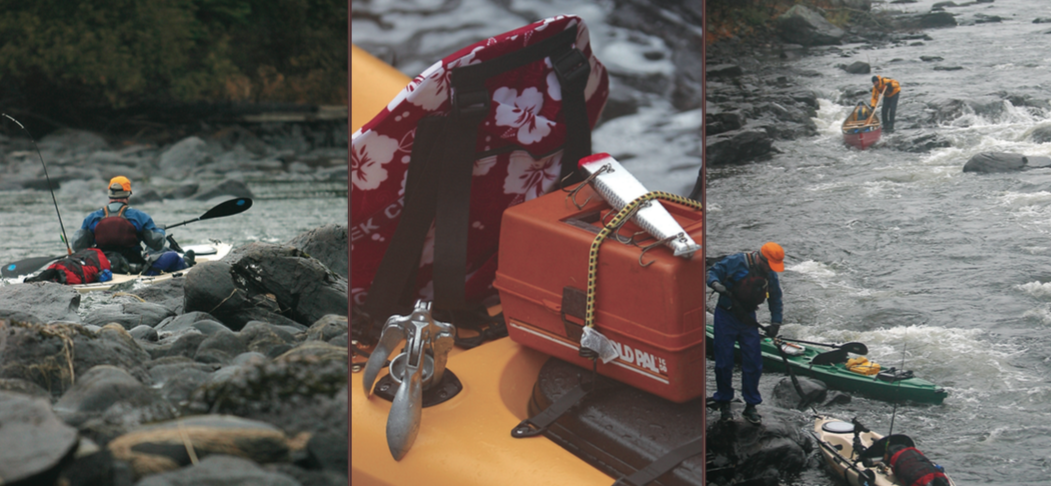
The fall is the time to hunt muskie. As the lakes and rivers around the Great Lakes cool, the muskies’ internal alarm goes off and they move from their deep summer hangouts to shallow waters where they start chowing down on whatever they can find in order to store reserves for the long, cold winter ahead. As the water cools and the leaves change colour during the latter part of September and early October the muskie lurk in one to two feet of water amid the lily pads and rushes, along- side logs and stumps. Research indi- cates that 4 to10 degrees is the optimum water temperature (for the feeding muskie, not sit-on-top kayak fisher- men).
Dangling your toes over the edge of your kayak looks very appealing in photographs but doing so in muskie territory is not only chilly, but can be risky.
Muskie are known to grow to almost 70 pounds and up to five feet long and sometimes eat mice, ducklings and muskrats; they’ve been known to order take-out that’s up to 45 per cent of their own length and sometimes die trying— muskie have been found dead with their last meal lodged down their throats. A true case of one’s eyes being bigger than his stomach.
Dan Droessler was dangling a leg over his canoe in Iowa County, Wisconsin, when a 36- inch muskie decided it looked pretty tasty. When he yanked his foot out of the water the muskie let go and fell into Dan’s canoe. According to Randy Rosslin, a local park war- den, Droessler and the fish both went to the emergency room where he (not the fish)
received 60 stitches. Rosslin took possession of the muskie, explaining, “It’s not a legal size for one thing, and it’s not a legal way to catch fish—with your foot.” Droessler wasn’t charged for illegal fishing but failed to see any humour in the ordeal. “I don’t think it’s funny at all,” he later told the Wisconsin State Journal.
Muskie experts, both fishermen and biologists, agree that when one consid- ers the amount of time humans and muskies share the same water, such attacks are very rare. One report even points out that being chomped by a muskie is even less common, and cer- tainly less consequential, than being struck by lightning. Maybe so, however, I think dragging an angry 30-pound lightning bolt across my lap might be bringing up the otherwise low chances.
Paddling the Lake Tavers to McManus Lake section of the Petawawa River typically fills the better part of three days paddling and two nights camping. To fish this stretch of river in the same length of time we were constantly on the move, trolling mostly with our rods stuffed in the holders. We were paddling at what we hoped was the speed that would entice lurking muskellunge to ambush our trailing lures.
It was close to freezing during the nights and in the mornings we danced around drinking coffee, trying to avoid crawling back into our drysuits.
Being so late in the fall, dawn didn’t arrive until after seven, so we weren’t on the water until mid-morning. We needed to make time to reach our next campsite before dark.
The Algonquin Park map told me we were just below Little Thompson rapids and my Lowrance X67e sonar indicated that I was in about 15 feet of water but that I had just passed a grassy shoal that rose to only four feet below the surface. The edges of the river were filled with grasses and lily pads that grew out toward the centre. The water was dark and looked cold. It was raining, again.
When my rod bent double and my reel began dumping line I swore out loud for no one to hear. Everyone else was almost out of sight in the misty fog downstream. The kayak spun backward like it had yesterday each time I’d hooked a rocky shoal, reed bed or sunken log. Too lazy to paddle back upriver I tightened my drag, hauled on the 25-pound test line and pulled against the snag, dragging my fully loaded kayak back upriver, against the sleepy current.
When the line was taut directly below me, my colour LCD screen indicated 10 feet of water—I knew my floating blue jointed Rapala must have missed the shoal and hooked a submerged tree instead. I slowly dragged the log to the surface, reeling in the slack I created with each haul. Frustrated by being left behind, I glanced downstream and didn’t notice the log coming to the surface.
Six inches from my leg was my Rapala, trapped inside a mouth full of daggers, and one dark eye.
“JESUS…”
My startled yell set him off and he was gone deep below the boat. My rod bent completely around under the boat, and the same tension on my reel that I used to drag the kayak upstream was now spooling off line like dental floss in the hands of a savage hygienist.
I kept trying to get my rod on the same side as the fish, but no sooner would I get it around the bow than he’d change direction below me and spin the boat again.
“FISH ON, GET THE NET!” I screamed into the fog.
Now completely spooked, the muskie wasn’t at all interested in getting near the surface or my mango kayak. I finally tightened the drag a few more clicks and was able to put some line back on the reel and slowly bring him to the edge of the boat.
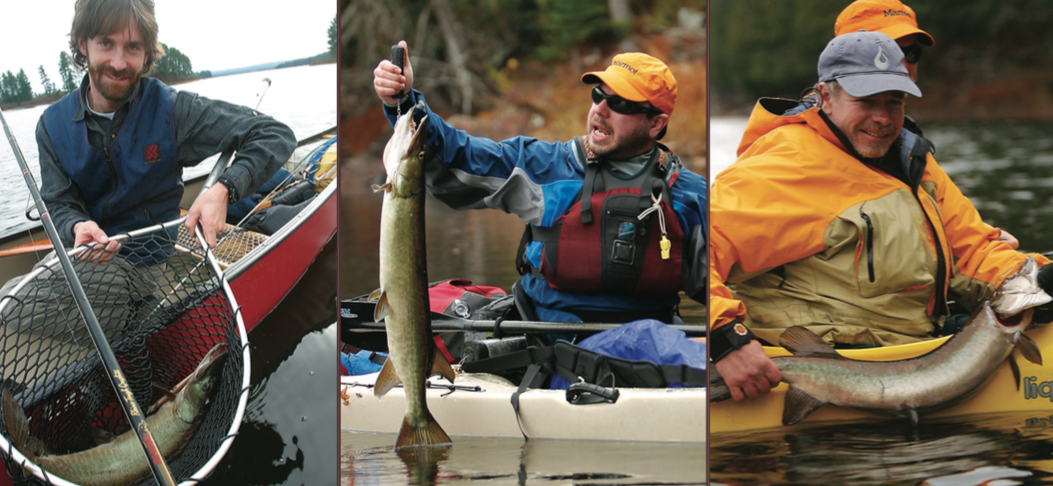
We had figured out a technique with the three ‘skies we’d landed yesterday that was much the same as the one Vic and Rhino used to land the shark, without beating it upside the head. Landing a muskie in fishing kayaks is a two-person job. The assistant floats up beside the fisher with the net or just a spare set of hands and scoops the fish out of the water.
With my fish now at the surface and my helpers paddling like mad, but still hundreds of metres away, I was faced with landing this monster myself.
I’d read that muskie teeth aren’t like those of sharks or piranhas, the purpose of which is shearing flesh. Muskie teeth are extremely sharp and numerous but used only for holding on to their slippery prey. Knowing this didn’t make me any more enthusiastic about grabbing the leader and dragging the meanest of all freshwater fish onto my lap.
I had him to the surface beside the kayak a couple of times. He was easily the length of my legs, which I figured I’d use to pin him to the deck. Grabbing the leader I lifted his flat ugly head out of the water.
Staring into his dark, evil muskie eyes I considered my options.
Landing the largest fish out of the Petawawa River, maybe even Ontario, would certainly increase my macho angling status in tackle shops around the world and doing so solo in a fishing kayak would certainly add to the lore. I’d be famous. I’d never have to buy drinks in marina bars; I’d have my own TV show and people would read about me online, like I had read about Vic Van Wie and his world-record thresher shark.
On the other hand, I thought of poor Dan Droessler and his leg with 60 stitches. His muskie hangs in the hospital ER reception area in Dodgeville, Wisconsin, with a sign under it that says, “Man-eating fish.” I realized that being admitted to the hospital with a pissed off muskel-lunge latched to my genitals would also make me famous but do nothing for my angling (or manly) reputation.
I gently lowered my muskie back into the water and opened the bail on my reel giving him all the line he wanted. About 30 feet away he hit the surface, shook the hook at me and was gone.
When the guys finally arrived with the net, I was reeling in the last few feet of line and my scarred blue Rapala. They asked what happened.
“Just snagged on a log,” I explained.
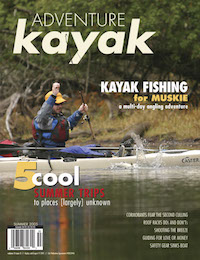 This article first appeared in the Summer 2005 issue of Adventure Kayak Magazine. For more great content, subscribe to Adventure Kayak’s print and digital editions here.
This article first appeared in the Summer 2005 issue of Adventure Kayak Magazine. For more great content, subscribe to Adventure Kayak’s print and digital editions here.




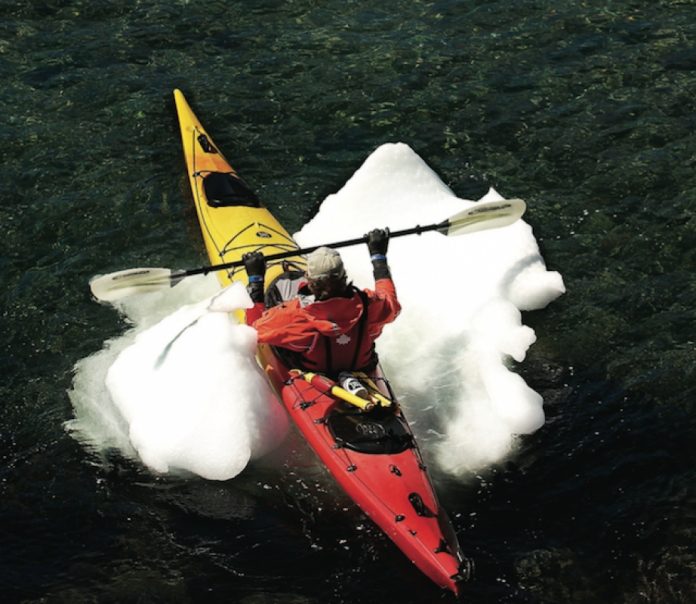

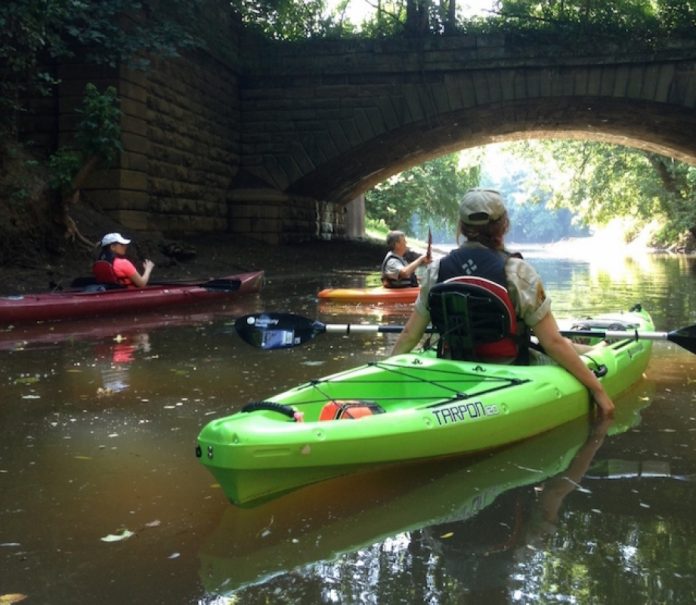
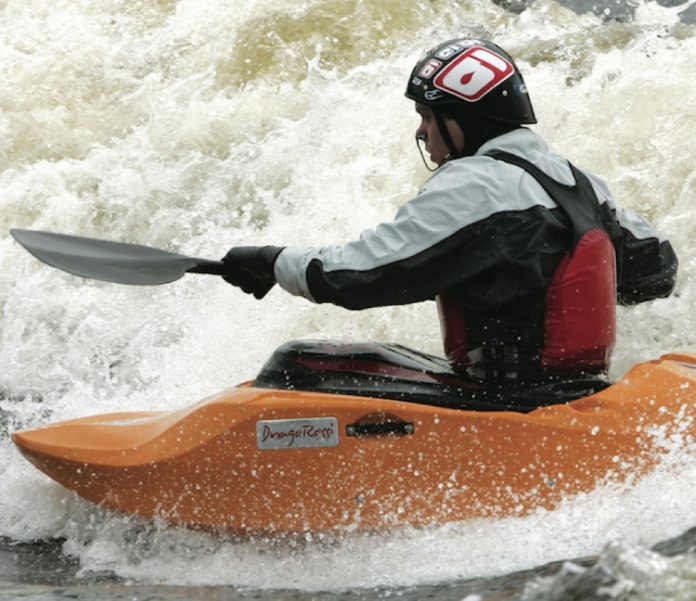
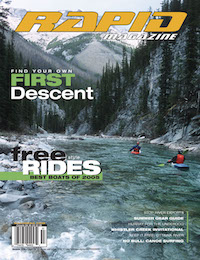 This article first appeared in the Summer 2005 issue of Rapid Magazine. For more great boat reviews, subscribe to Rapid’s print and digital editions
This article first appeared in the Summer 2005 issue of Rapid Magazine. For more great boat reviews, subscribe to Rapid’s print and digital editions 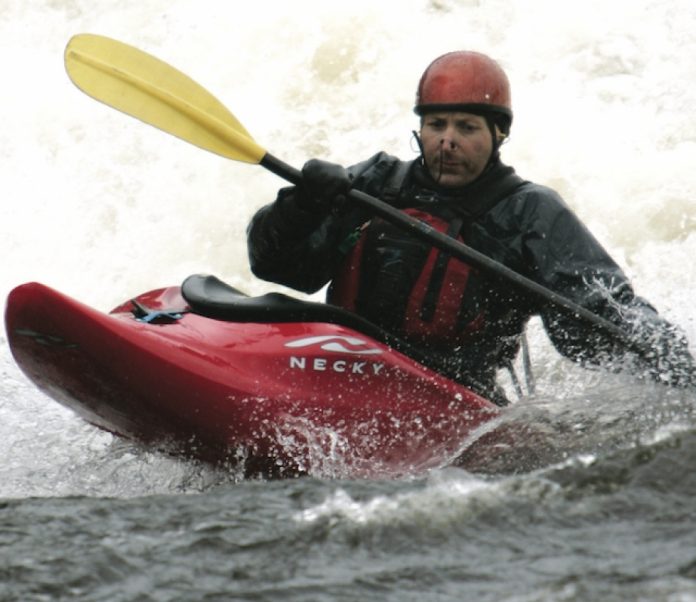
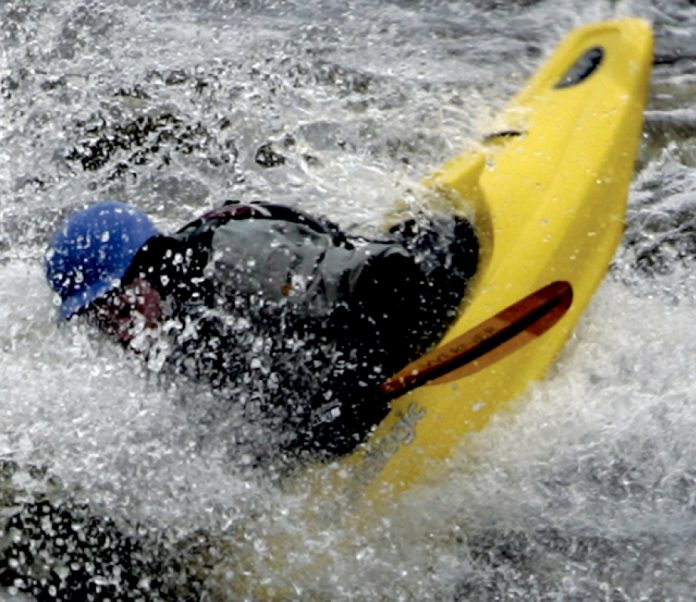
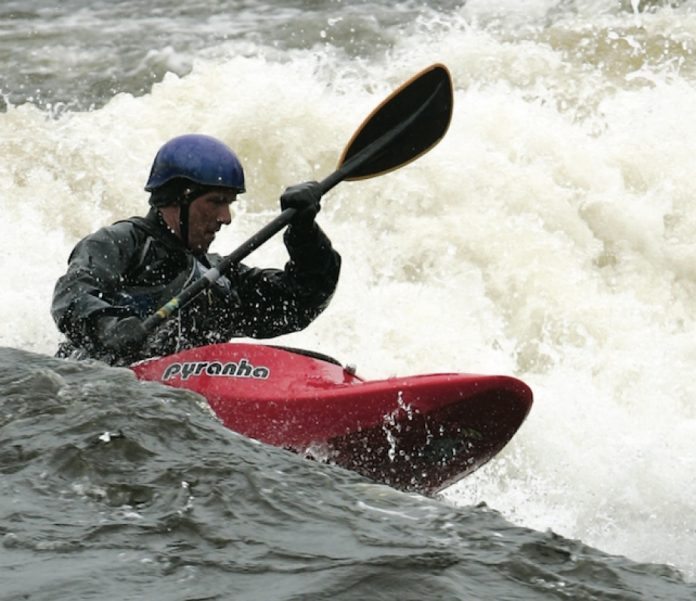
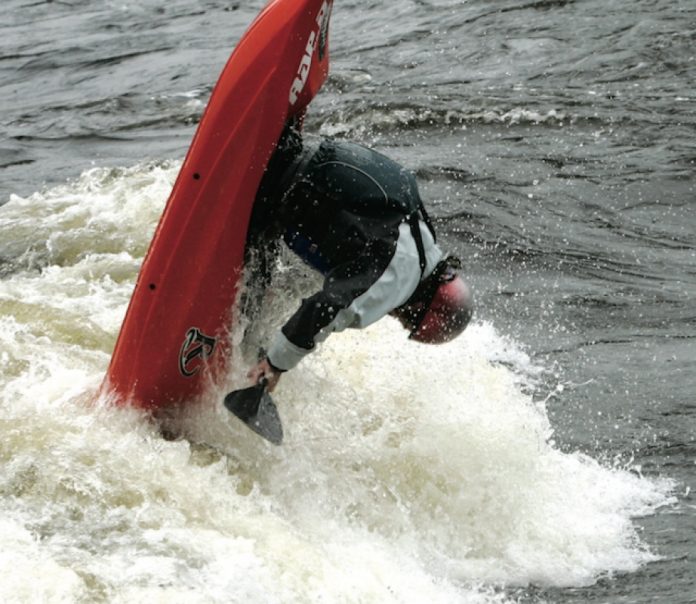
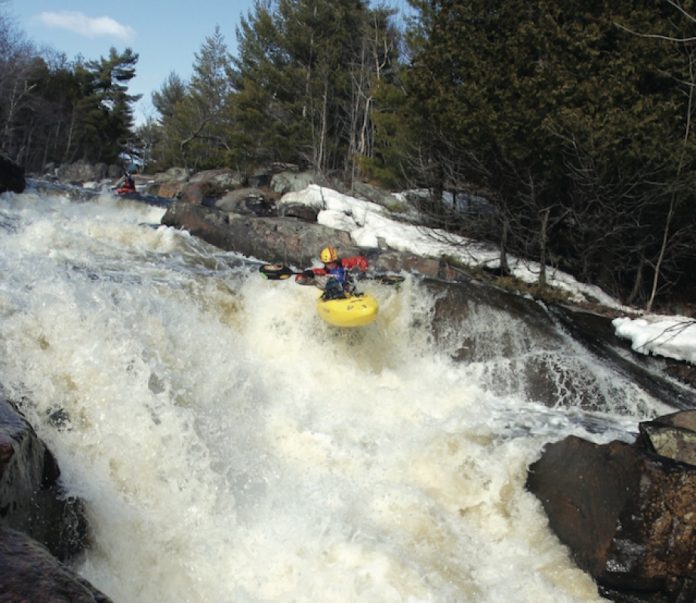
 This article first appeared in the Early Summer 2005 issue of Rapid Magazine. For more great content, subscribe to Rapid’s print and digital editions
This article first appeared in the Early Summer 2005 issue of Rapid Magazine. For more great content, subscribe to Rapid’s print and digital editions 